The best brothels featured musicians, typically small string ensembles or piano players—the latter known as “professors” who were the highest earning musicians in the District, bringing in significant nightly tips. Establishments with fewer resources might have a coin-operated mechanical player piano or a hand-cranked gramophone. Customers frequently wanted to hear popular tunes from Broadway shows and the Ziegfeld Follies, opera favorites, ragtime hits, and the latest releases from New York’s Tin Pan Alley. Musicians had to be prepared to play anything the customer wanted to hear. Bawdy lyrics sometimes replaced the actual words to the songs and were often sung by the piano player, the madam herself, or the sex workers in her employ.
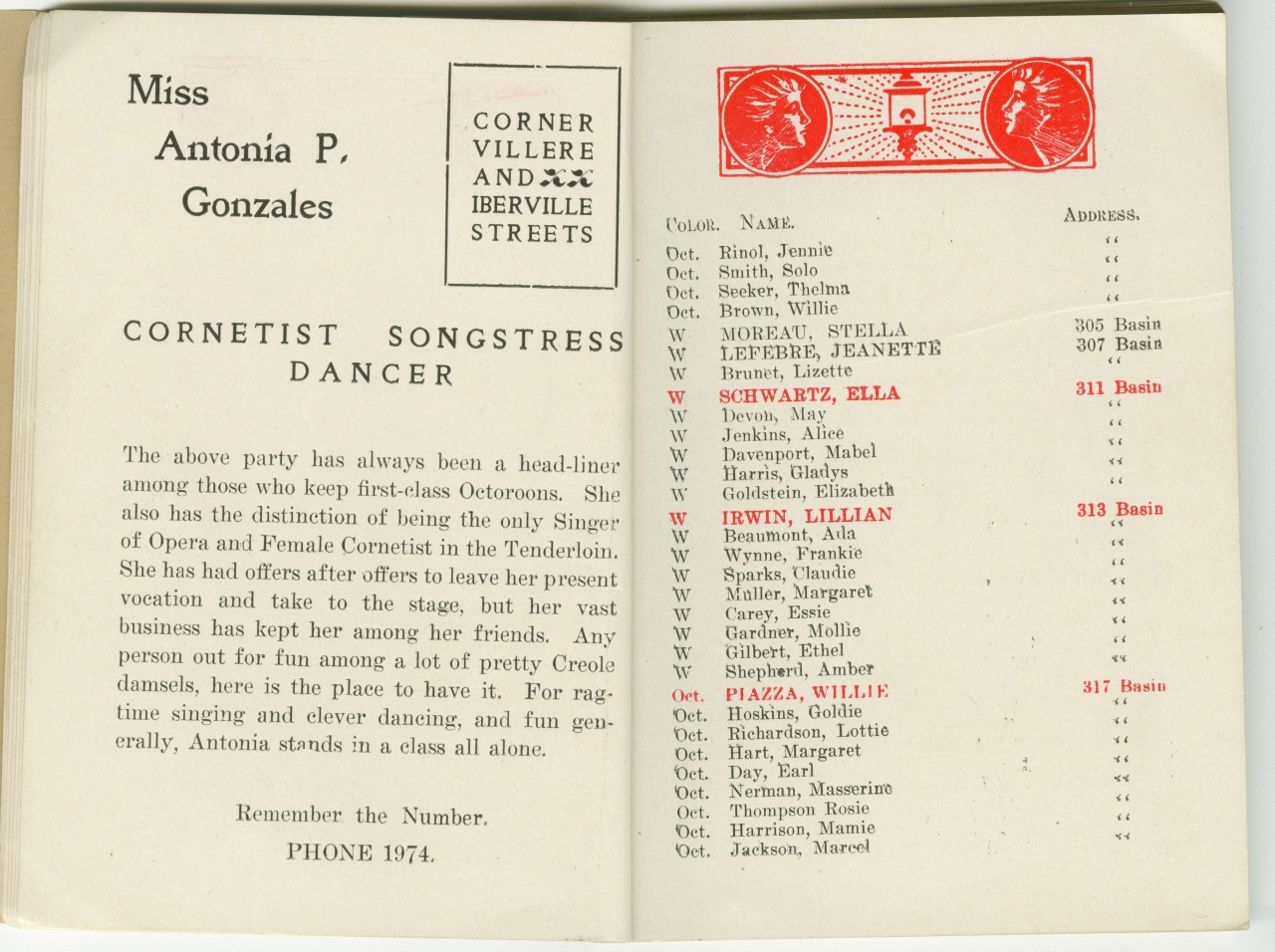
Advertisement for the madam Antonia P. Gonzales
from Blue Book
New Orleans, [1905]
The Historic New Orleans Collection, 1969.19.6Antonia P. Gonzales was the only madam to advertise herself as a musician, and is the only musician mentioned by name in Blue Book. She was known to have been accompanied by the leading piano players of the day, including Tony Jackson and Jelly Roll Morton, while she sang and played the cornet.
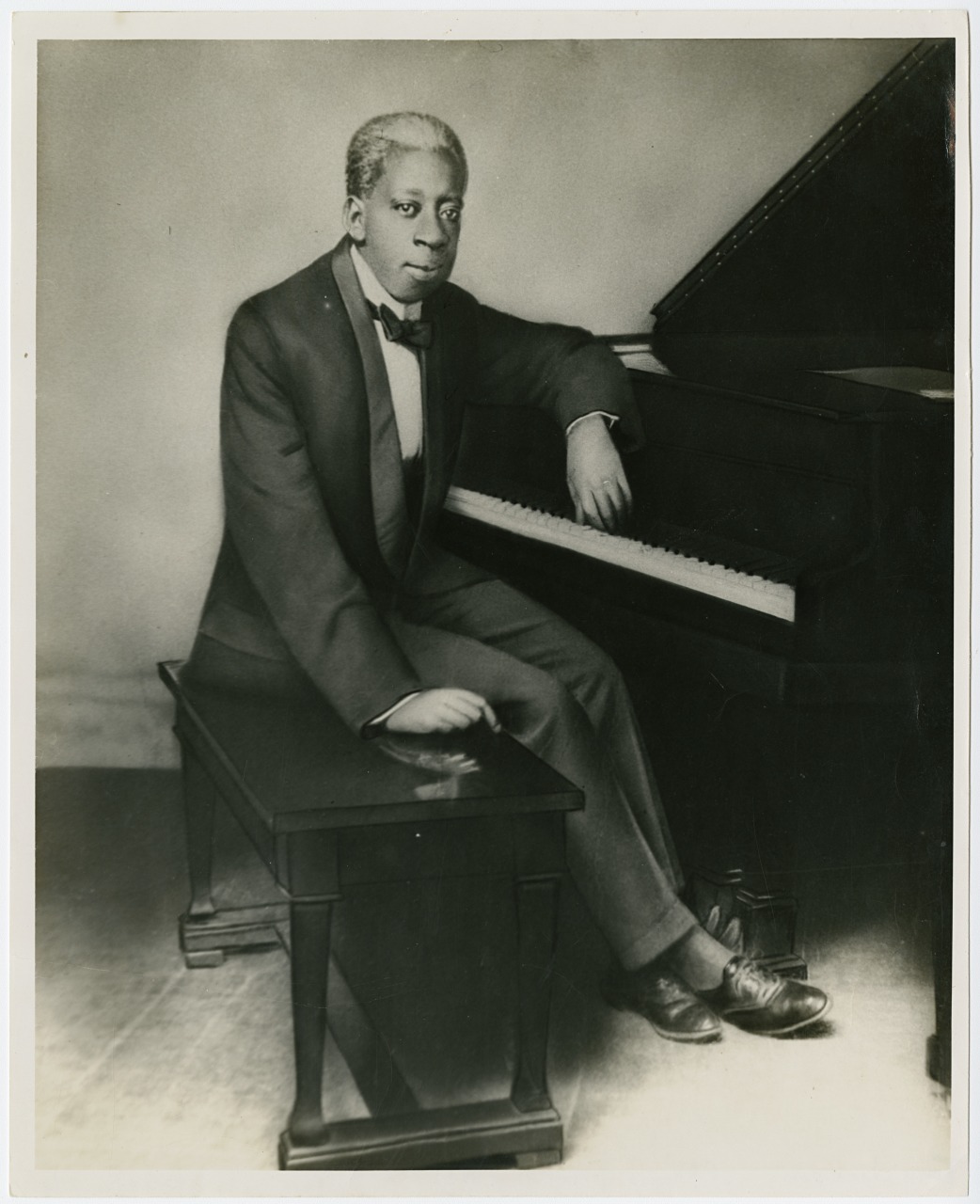
Tony Jackson
between 1907 and 1916; gelatin silver print
The Historic New Orleans Collection, The William Russell Jazz Collection, acquisition made possible by the Clarisse Claiborne Grima Fund, MSS 508, 92-48-L.241At the top of the District’s musical hierarchy were the piano players who worked at the most expensive brothels. “Professors,” as they were commonly known, played for tips against a guarantee put up by the madams. Playing at the most exclusive brothels meant access to an audience with deep pockets. With no band members to pay out, professors were the highest paid of the District’s musicians, and, within this group, Tony Jackson (1882–1921) was the king.
...In an interview with folklorist and ethnographer Alan Lomax, pianist Jelly Roll Morton described Jackson as “the greatest single-hand entertainer in the world.” In Storyville, New Orleans (1974), the musician Manuel “Fess” Manetta is quoted as saying, “Tony was in charge from the day he went to work. We all listened to him. Nobody could match him.” Known for his all-encompassing repertoire and beautiful singing voice, Jackson was the top entertainer in Storyville. Entirely self-taught, he began working in the District during his teenage years and was known to have played at most of the high-end brothels, including Lulu White’s Mahogany Hall, Hilma Burt’s, and Antonia P. Gonzales’s, as well as saloons such as Frank Early’s and the Frenchman’s.
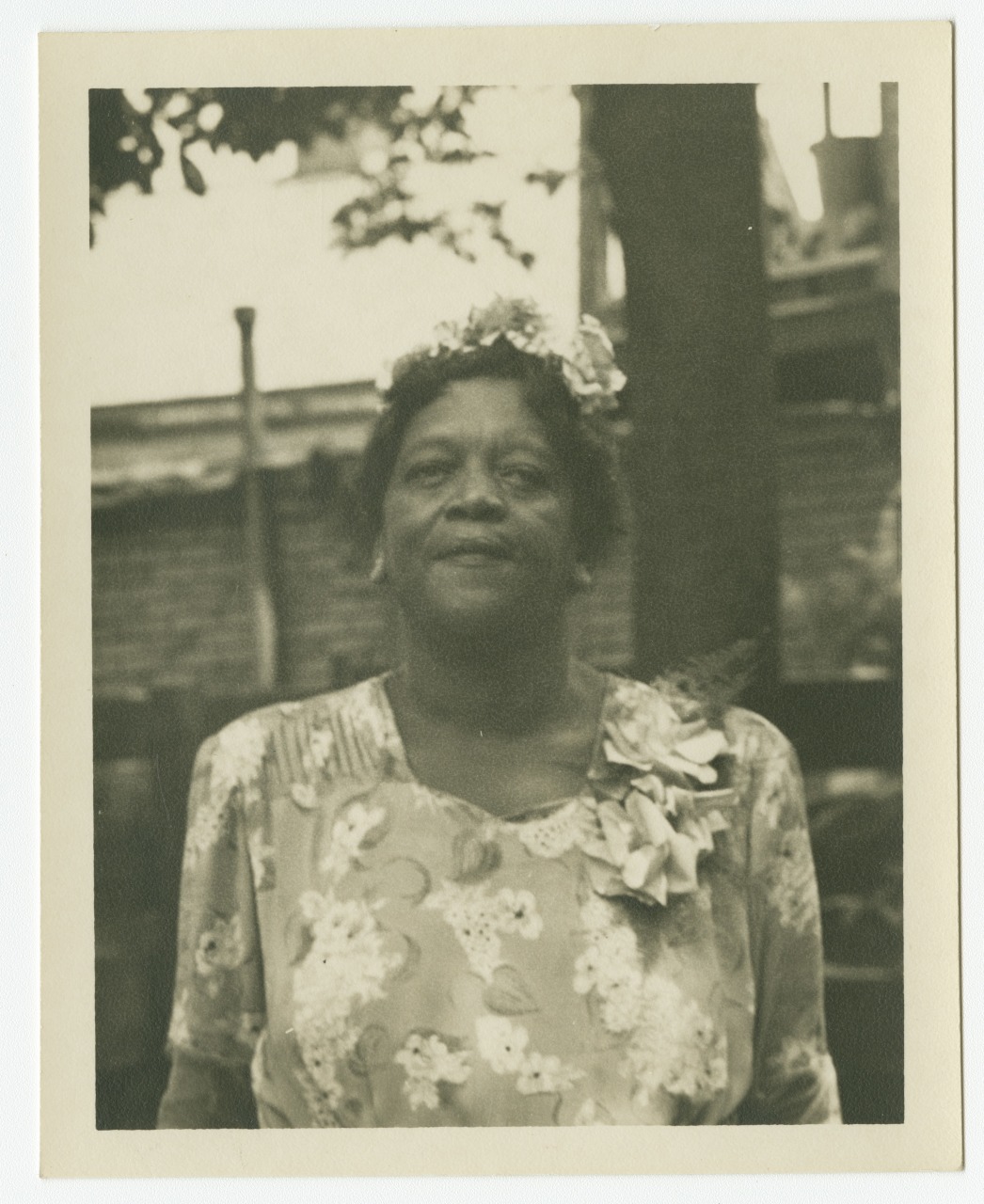
Ann Cook
July 25, 1949; gelatin silver print
The Historic New Orleans Collection, The William Russell Jazz Collection, acquisition made possible by the Clarisse Claiborne Grima Fund, MSS 520, 92-48-L.276
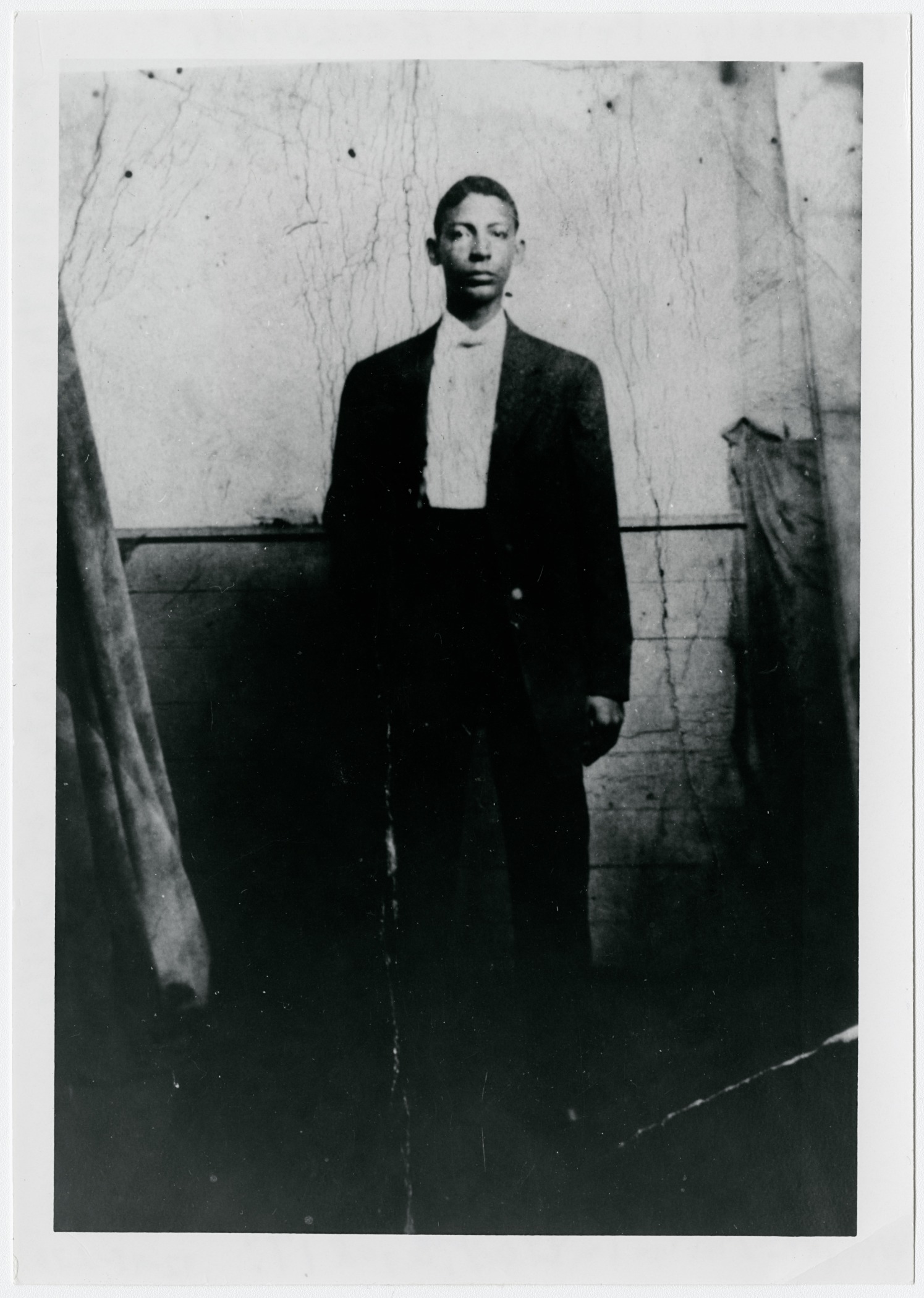
Jelly Roll Morton
before 1920; gelatin silver print
The Historic New Orleans Collection, The William Russell Jazz Collection, acquisition made possible by the Clarisse Claiborne Grima Fund, MSS 508, 92-48-L.73Ferdinand Joseph Lamothe (also rendered La Menthe and Lemott) (1890–1941), more commonly known as Jelly Roll Morton, was born to a middle-class Creole family on Frenchmen Street. Early on, he exhibited a passion and talent for music. During his childhood, he attended performances at the French Opera House in the French Quarter, which piqued his interest in the piano. As a teenager..., he began playing piano at many of the most expensive brothels of Storyville, including Josie Arlington’s, Willie Piazza’s, Lulu White’s, Antonia Gonzales’s, and Hilma Burt’s. Morton also spent considerable time at the Frenchman’s, which served as an after-hours venue for piano cutting contests (competitions between musicians), some of which lasted well into the afternoon of the following day. Morton’s years playing in the District were highly creative for the artist. He developed his musical voice and began composing a number of the pieces that he would later publish and record, including “New Orleans Blues,” “Jelly Roll Blues,” and “King Porter Stomp.” In 1915 “Jelly Roll Blues” became the first jazz composition to be published as sheet music. Morton would later claim that he invented jazz during his Storyville years, and while many have disputed this claim, he was undeniably an early jazz pioneer.
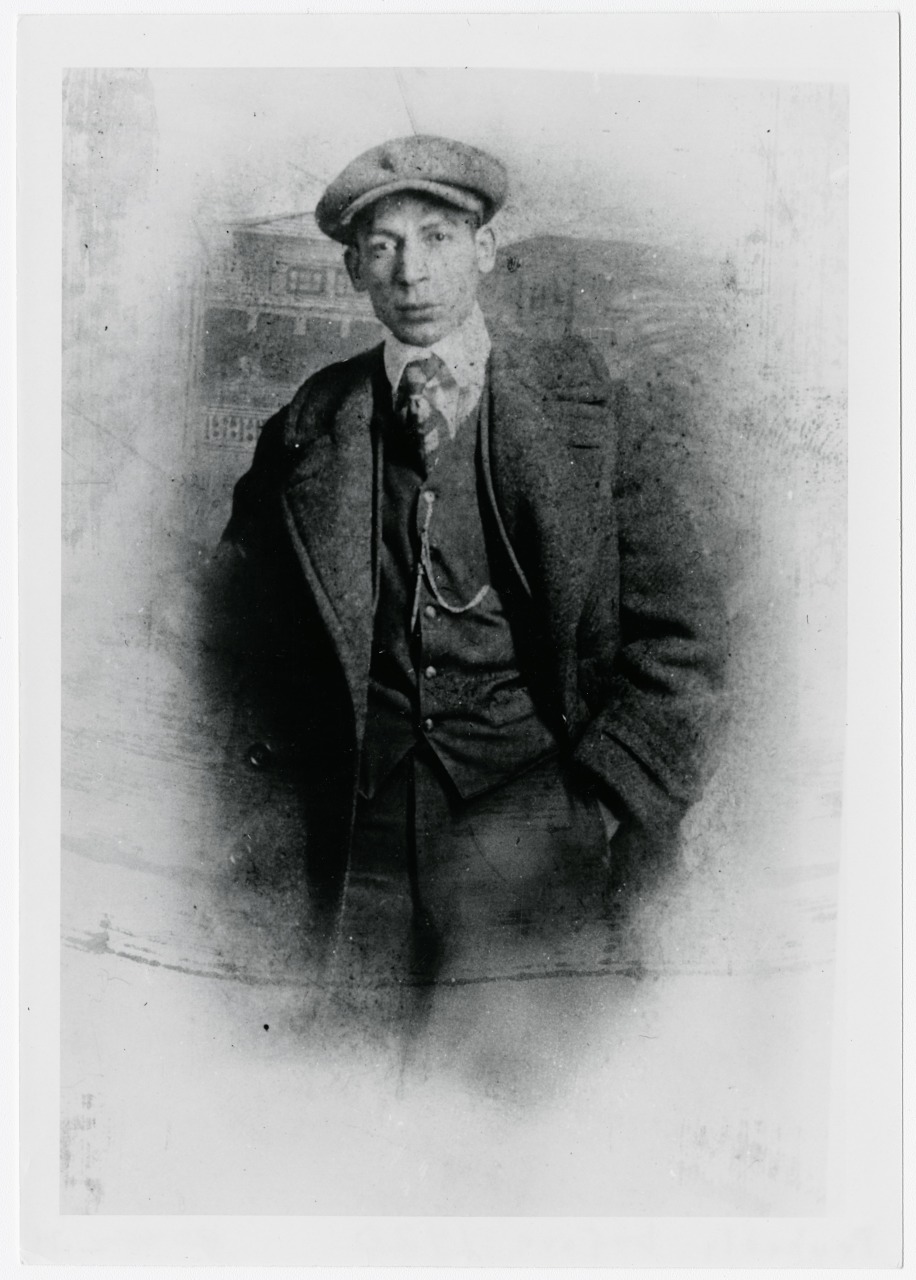
Jelly Roll Morton
between 1902 and 1906; gelatin silver print
The Historic New Orleans Collection, The William Russell Jazz Collection, acquisition made possible by the Clarisse Claiborne Grima Fund, MSS 508, 92-48-L.74
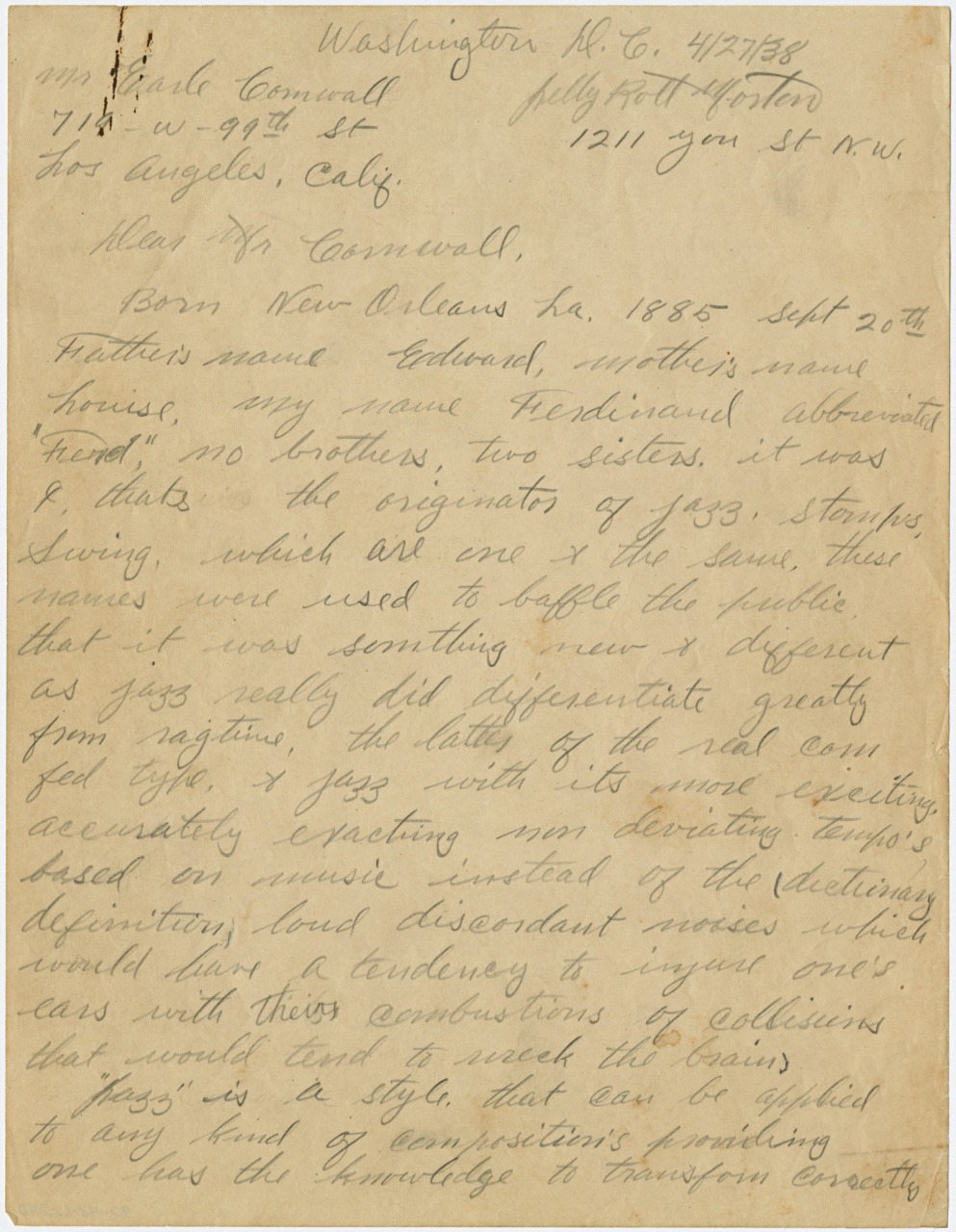
Letter from Jelly Roll Morton to Earle Cornwall, describing his experiences between 1902 and 1915 in Storyville
April 27, 1938
The Historic New Orleans Collection, The William Russell Jazz Collection, acquisition made possible by the Clarisse Claiborne Grima Fund, MSS 507, 92-48-L.240
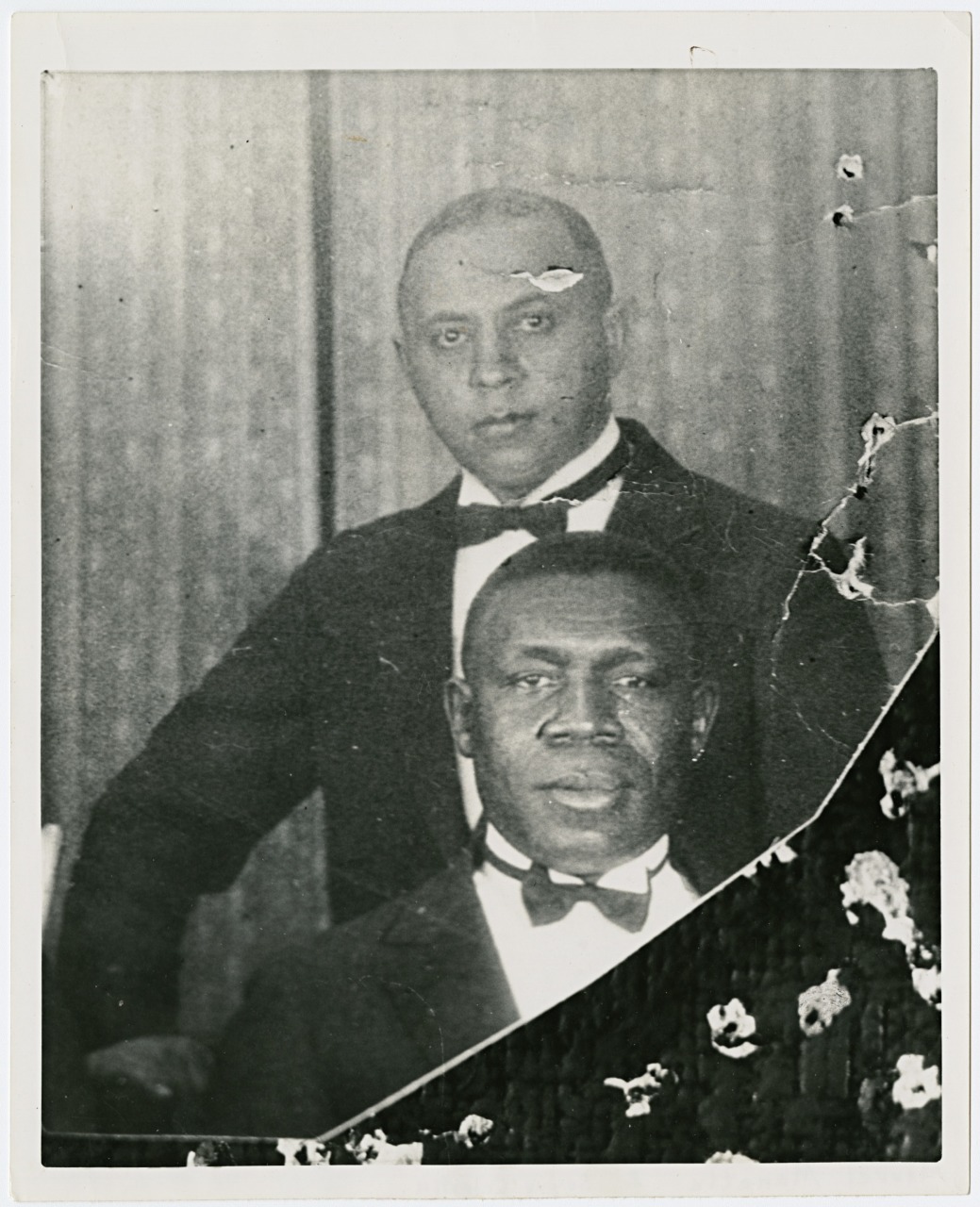
Manuel “Fess” Manetta (standing) and Oscar “Papa” Celestin
ca. 1924; gelatin silver print
The Historic New Orleans Collection, The William Russell Jazz Collection, acquisition made possible by the Clarisse Claiborne Grima Fund, MSS 516, 92-48-L.250Like Jelly Roll Morton, Manuel “Fess” Manetta (1889–1969) was influenced as a child by performances at the French Opera House. This early exposure to the European classical music tradition prepared Manetta for his musical career as a piano professor in Storyville brothels such as Lulu White’s and Willie Piazza’s, where opera and classical music were in high demand. Manetta’s ...collection of sheet music from the Storyville era (a small portion of which is on display here) attests to the popularity of traditional tunes. Piano players needed to be proficient at reading written music, and, according to Manetta, professors were often tested with reading an opera overture for piano prior to landing any steady gig in a brothel. A self-proclaimed “master of all instruments,” Manetta never had much trouble finding work in the District, where he filled in with a number of bands on trumpet, clarinet, guitar, and saxophone.

“Poet and Peasant” Overture
by Franz von Suppé, composer; C. T. Brunner, arranger
New York: De Luxe Music, 1912
The Historic New Orleans Collection, The William Russell Jazz Collection, acquisition made possible by the Clarisse Claiborne Grima Fund, MSS 516, 92-48-L.247

Overture to “William Tell”
by Gioachino Rossini
The Historic New Orleans Collection, The William Russell Jazz Collection, acquisition made possible by the Clarisse Claiborne Grima Fund, MSS 516, 92-48-L.65

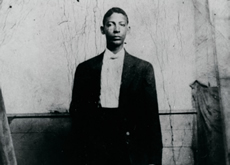 Listen to Jelly Roll Morton reminisce about early career and the music scene in Storyville.
Listen to Jelly Roll Morton reminisce about early career and the music scene in Storyville.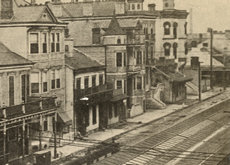 Listen to Rosalind Johnson perform “When the Pale Moon Shines” and discuss her life as a piano player in the District.
Listen to Rosalind Johnson perform “When the Pale Moon Shines” and discuss her life as a piano player in the District.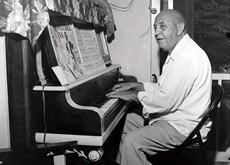 Listen to Manuel “Fess” Manetta describe the music, musicians, brothels, and clubs of Storyville.
Listen to Manuel “Fess” Manetta describe the music, musicians, brothels, and clubs of Storyville.